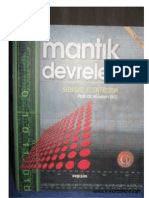
Yazik Programmirovaniya Si Kernigan Ritchi Pdf
Bell Labs was home to many technologies and inventions, but the C programming language developed there had one of the biggest impacts on embedded computing. Many people have worked on C to make it what it is today, the most used programming language around. Three stand out, though: Ken Thompson (Fig.
Queria este libro pero parece que ya no estan disponibles! Ojala y los pudieran arreglar si no gracias de todas maneras! @Alberto 16:04:37 #10.
1) and Dennis Ritchie (Fig. 2), who created it, and Brian Kernighan (Fig. 3), who authored The C Programming Language with Ritchie This file type includes high resolution graphics and schematics when applicable. Ritchie and Thompson both worked with BCPL (Basic Combined Programming Language), which was used on Multics. It was the basis for the B language developed by Thompson for UNIX on the 18-bit PDP-7 from the Digital Equipment Corporation (DEC). The PDP-7 had a 1.75-µs memory cycle time, and an add instruction took 4 µs to execute. The typical system had only 4 kwords.
Ritchie modified B, which eventually became the C programming language. One major difference was C’s handling of pointers. C also had a character type.
It was designed to be adapted to new hardware like the 16-bit DEC PDP-11. Ritchie and Thompson received the ACM Turing Award in 1983 for their work on C as well as UNIX. Thompson wrote the first version of UNIX in assembler, followed by many iterations written in C. Kenneth Thompson Ken Thompson developed the C programming language with Dennis Ritchie. He wrote the first version of UNIX using C at the Bell Labs Computing Sciences Research Center. “Our collaboration has been a thing of beauty.
In the 10 years that we have worked together, I can recall only one case of miscoordination of work,” Thompson said about Ritchie in his ACM Turing Award Lecture: Reflections on Trusting Trust. “On that occasion, I discovered that we both had written the same 20-line assembly language program. I compared the sources and was astounded to find that they matched character for character.

The result of our work together has been far greater than the work that we each contributed.” Also in his Turing Award lecture, he described how he had incorporated a backdoor security hole in the original UNIX C compiler. To do this, the C compiler recognized when it was recompiling itself and the UNIX login program. When it recompiled itself, it modified the compiler so the compiler backdoor was included.
When it recompiled the UNIX login program, the login program would allow Thompson to always be able to log in using a fixed set of credentials. The initial C compiler source code included the hack. Electronic devices and circuits by sanjeev gupta pdf. The source code for subsequent compilers had it removed, though.
The binary would include the backdoor when compiled with a compiler that includes the backdoor code. After discussing the backdoor, Ken stated, “The moral is obvious. You can't trust code that you did not totally create yourself.” Thompson has worked on a variety of projects, including the QED and ed editors. This included his construction algorithm for converting regular expression into nondeterministic finite automaton. The algorithm improves the performance of expression pattern matching. He also developed the widely used character encoding scheme, UTF-8, with Rob Pike and helped create the world champion Belle chess computer hardware and software with Joseph Condon. Thompson currently works for Google as a Distinguished Engineer, where he helped design the Go programming language.
He received a BS and MS in electrical engineering and computer science from the. Dennis Ritchie Dennis Ritchie developed the C programming language with Ken Thompson at the Bell Labs Computing Sciences Research Center. Born in 1941, Ritchie and started work at Bell Labs in 1967 after graduating from with degrees in physics and applied mathematics. He did part-time graduate work on the Massachusetts Institute of Technology’s Project MAC using the Multics system.